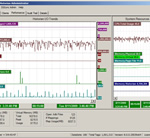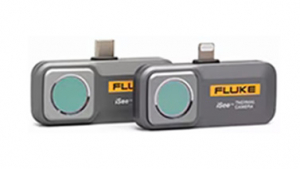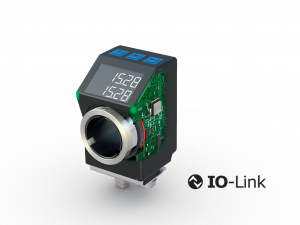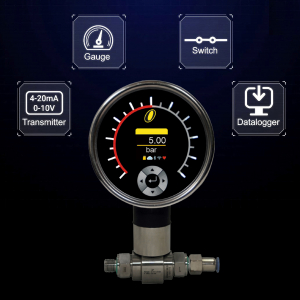Canary Labs Trend Historian –Over 1 million tags with 1 second updates on 1 machine
7th September 2009
Source:
Canary Labs, Inc.

Canary Labs announces the release of the Trend Historian 8.0 which will ease the task of collecting, storing, managing, and automatic validation of huge quantities of time series data to partners and end-users.
The Canary Trend Historian has been deployed and used in production systems since 2000. This latest version has been upgraded to expand the capacity and performance to even higher levels than before. The Trend Historian is available in either a 32-bit or 64-bit version, and has been re-designed to provide capacities and throughputs that are the highest in the industry.
The Performance numbers: The performance numbers were determined by the built-in performance profiling monitoring software. The writing performance of the Trend Historian on the Server test machine exceeded 3.6 million updates (TVQs) per second and the reading performance exceeded 13 million updates (TVQs) per second.
TVQs is the Trend Historian storage unit that consists of 3 parts. A Timestamp at 100ns resolution (UTC Filetime), a Value (variant) (4 and 8 byte reals, various integers, Booleans, and strings), and a Quality (16-bit word) matching the definition of OPC.
The Server test machine: Dell Power Edge 2950 Server, 2 Quad Cores Xeon E5420 2.5Ghz (8 Cores Total), 16 GB Memory, Raid with 3 – 7.2K 250 GB SATA drives, OS: Windows Server 2008 x64, with a street price under $4,000 including UPS.
64-bit vs 32-bit Trend Historian performance comparison: Both have similar profiles and performance numbers. The 64-bit system is about 16% faster for 1 session and 7% faster for 8 sessions. Hard disk performance will determine individual performance results. The biggest difference between 32 and 64-bit systems is the increased addressable virtual memory capabilities in the 64-bit system to handle the large tag counts (recommended for over 100,000 tags).
Networking issues and considerations: With high data volumes, network throughput capabilities must be considered. Canary can provide some base throughput capabilities based on the type network connection in place and make recommendations. Overall system designs needs to be considered with the network connections and how the additional loading is going to impact the overall operation of the network to carry non-historian related traffic.
Scalability and Tag capacities: Canary’s Trend Historian has the scalability for large, high-end systems to the smallest system. We have you covered – from 100 tags to over 1 million tags in scalability. Once your application exceeds 100,000 tags, we recommend that you use the 64-bit version to take advantage of the O/S extended addressable virtual memory capabilities to handle large applications.
Client capabilities: Since the Trend Historian is a multi-threaded application; the number of clients is not limited by the Trend Historian. It requires very limited resources in the Historian and the performance impact is based on the number of tags and data being requested. Typically there are two types of data requests, historical data requests are usually short, intermittent and interspersed (loading the chart and scrolling around) and live-mode data requests are constant which the historian handles very efficient requests with minimal performance impact.
Data Compression and Storage: Due to the high performance of the Canary Trend Historian, we do not have to implement compression techniques or only display selected data points to show fast trend chart data. With Canary, you can be sure that your raw data is accurate with fast response times without data integrity being compromised as is done in many other historians. The Trend Historian does not have any “compression” options. The Historian will compact the data to minimize the disk storage requirements. The data stream from the Historian will return the exact data stream that was sent. Typically, a R4 sample value is compacted to 4.5 to 6 bytes of disk space. This is normally called “No-Loss” compression. The logger application supports two forms of dead-banding, absolute and percentage. Canary has an Excel application available to help compute disk space needs.
OPC-HDA compliant: Canary Labs has been a charter member of the OPC Foundation since 1996 and an early adopter of OPC technology. Canary Labs proactively participates in interoperability testing and validation annually. The Canary Historian Trending tools are OPC client and OPC-HDA server based solutions, tested, and fully compliant with the OPC Specifications as tested in the OPC compliance lab in Germany this past year. The Canary Historian and Trend Link will support the new OPC-UA standard within the next few months.
Administrative tools: Performance Monitoring, Audit trail, Auto validation, Data file management, and Data Synchronization between systems.
The Performance numbers: The performance numbers were determined by the built-in performance profiling monitoring software. The writing performance of the Trend Historian on the Server test machine exceeded 3.6 million updates (TVQs) per second and the reading performance exceeded 13 million updates (TVQs) per second.
TVQs is the Trend Historian storage unit that consists of 3 parts. A Timestamp at 100ns resolution (UTC Filetime), a Value (variant) (4 and 8 byte reals, various integers, Booleans, and strings), and a Quality (16-bit word) matching the definition of OPC.
The Server test machine: Dell Power Edge 2950 Server, 2 Quad Cores Xeon E5420 2.5Ghz (8 Cores Total), 16 GB Memory, Raid with 3 – 7.2K 250 GB SATA drives, OS: Windows Server 2008 x64, with a street price under $4,000 including UPS.
64-bit vs 32-bit Trend Historian performance comparison: Both have similar profiles and performance numbers. The 64-bit system is about 16% faster for 1 session and 7% faster for 8 sessions. Hard disk performance will determine individual performance results. The biggest difference between 32 and 64-bit systems is the increased addressable virtual memory capabilities in the 64-bit system to handle the large tag counts (recommended for over 100,000 tags).
Networking issues and considerations: With high data volumes, network throughput capabilities must be considered. Canary can provide some base throughput capabilities based on the type network connection in place and make recommendations. Overall system designs needs to be considered with the network connections and how the additional loading is going to impact the overall operation of the network to carry non-historian related traffic.
Scalability and Tag capacities: Canary’s Trend Historian has the scalability for large, high-end systems to the smallest system. We have you covered – from 100 tags to over 1 million tags in scalability. Once your application exceeds 100,000 tags, we recommend that you use the 64-bit version to take advantage of the O/S extended addressable virtual memory capabilities to handle large applications.
Client capabilities: Since the Trend Historian is a multi-threaded application; the number of clients is not limited by the Trend Historian. It requires very limited resources in the Historian and the performance impact is based on the number of tags and data being requested. Typically there are two types of data requests, historical data requests are usually short, intermittent and interspersed (loading the chart and scrolling around) and live-mode data requests are constant which the historian handles very efficient requests with minimal performance impact.
Data Compression and Storage: Due to the high performance of the Canary Trend Historian, we do not have to implement compression techniques or only display selected data points to show fast trend chart data. With Canary, you can be sure that your raw data is accurate with fast response times without data integrity being compromised as is done in many other historians. The Trend Historian does not have any “compression” options. The Historian will compact the data to minimize the disk storage requirements. The data stream from the Historian will return the exact data stream that was sent. Typically, a R4 sample value is compacted to 4.5 to 6 bytes of disk space. This is normally called “No-Loss” compression. The logger application supports two forms of dead-banding, absolute and percentage. Canary has an Excel application available to help compute disk space needs.
OPC-HDA compliant: Canary Labs has been a charter member of the OPC Foundation since 1996 and an early adopter of OPC technology. Canary Labs proactively participates in interoperability testing and validation annually. The Canary Historian Trending tools are OPC client and OPC-HDA server based solutions, tested, and fully compliant with the OPC Specifications as tested in the OPC compliance lab in Germany this past year. The Canary Historian and Trend Link will support the new OPC-UA standard within the next few months.
Administrative tools: Performance Monitoring, Audit trail, Auto validation, Data file management, and Data Synchronization between systems.
Similar articles
More from Canary Labs, Inc.
- Canary Labs Enterprise Historian V9 Accommodates Small to Large Communication System Needs without Compromising Data Integrity 7th September 2010
- Canary Labs Trend Historian –Over 1 million tags with 1 second updates on 1 machine 7th September 2009
- Canary Labs Publishes Process Analytics White Paper 21st August 2009
- Canary Labs announces InfoLink Process Historian 27th February 2009












Write a comment
No comments